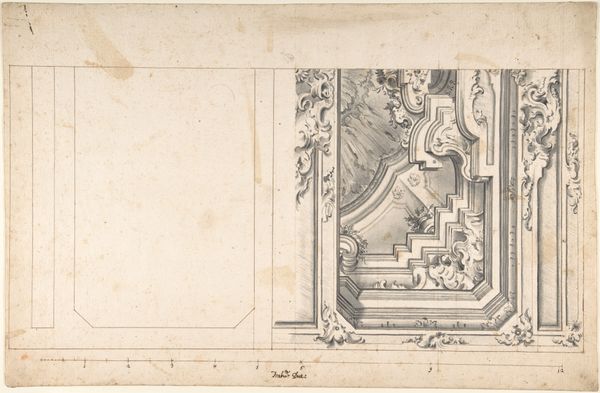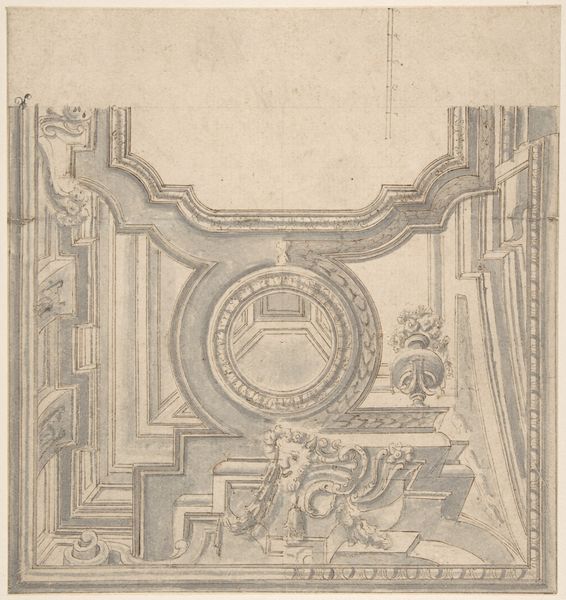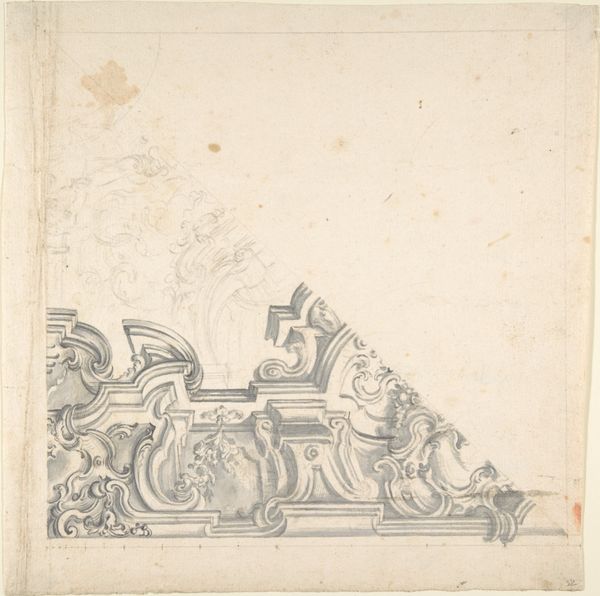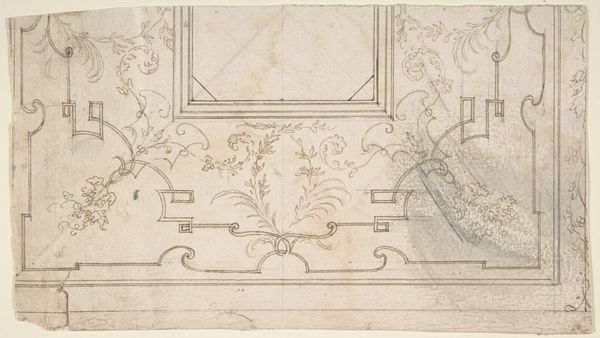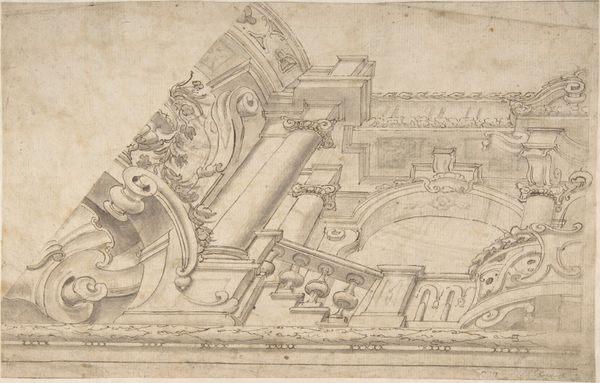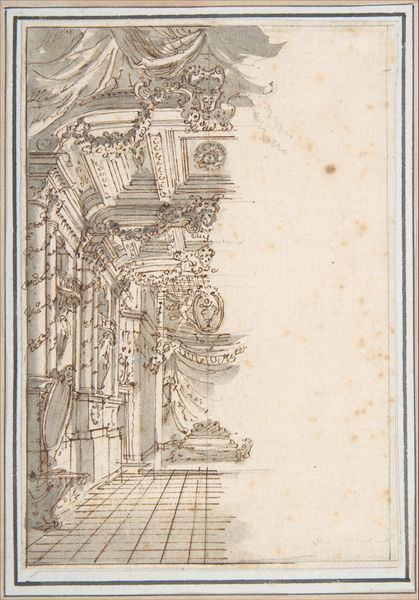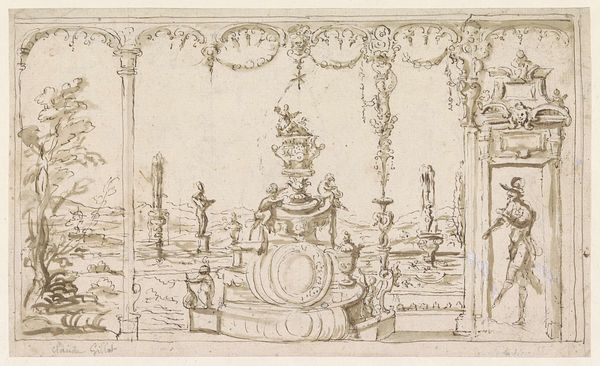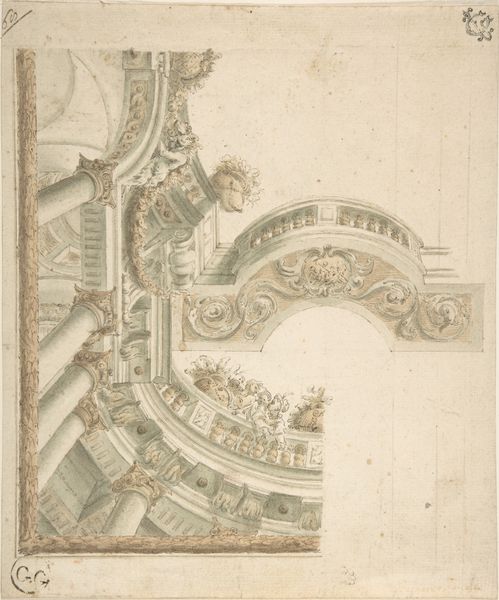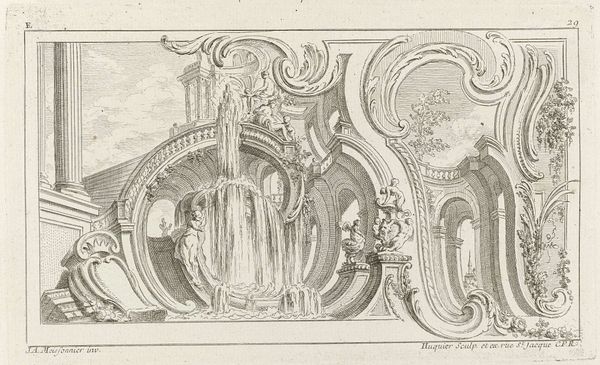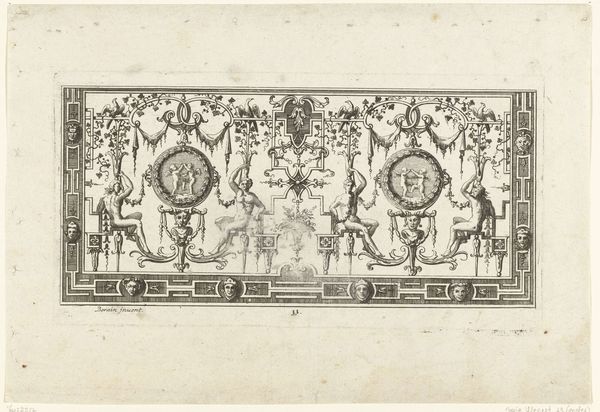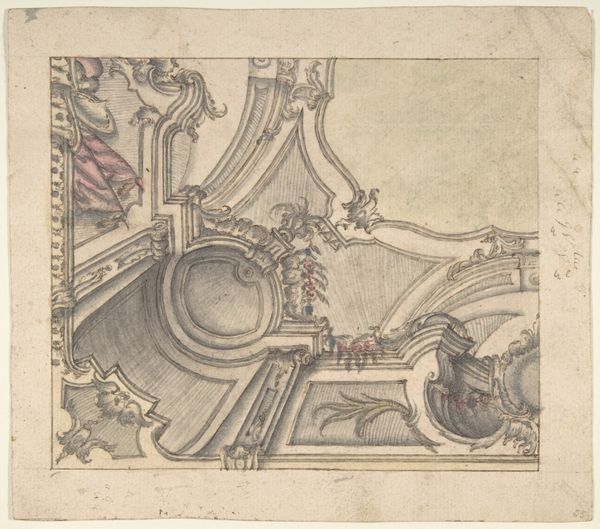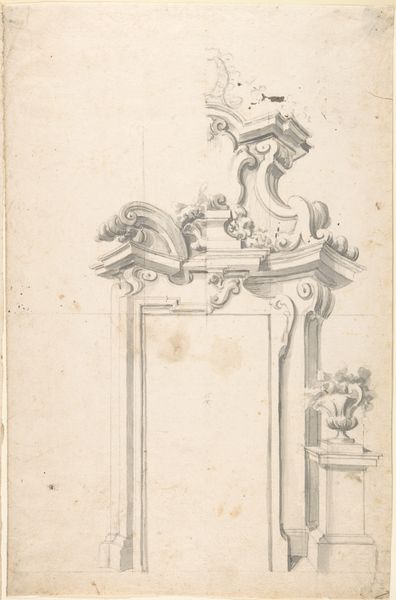
One Half Design for a Painted Ceiling with Central Oval Left Blank 1700 - 1780
0:00
0:00
drawing, print, ink, pen, architecture
#
drawing
#
baroque
# print
#
ink
#
arch
#
pen work
#
pen
#
architecture
Dimensions: 11 7/8 x 17 7/16 in. (30.2 x 44.3 cm)
Copyright: Public Domain
Curator: Welcome. Today, we'll be discussing "One Half Design for a Painted Ceiling with Central Oval Left Blank," a pen and ink drawing originating from the period of 1700 to 1780. Editor: My first impression is that there’s an unfinished quality here. It’s austere yet incredibly ornate, as though someone began a highly detailed project but lost steam midway through. Curator: The design illustrates Baroque sensibilities in its intricate detail. The use of precise pen work defines the elaborate ornamentation—the shells, floral arrangements, and scrolling motifs so favored at the time. We can appreciate how the artist, anonymous to us, captured the movement and drama inherent in the Baroque aesthetic, with only ink as their tool. Editor: It's quite formal. It really speaks to the cultural power and projection of authority found in palatial architecture of the time. You can imagine this in a grand reception room. It’s a partial window into the ideals and aesthetics promoted by the wealthy patrons and aristocratic elite for whom art like this was created. What narrative might have filled the blank oval, I wonder? Some mythological scene, maybe? Curator: The oval's emptiness opens interesting formal considerations. It invites a dialogue between the completed portions, focusing our attention on the rhythmic interplay of lines and shading already present, drawing attention to the architectural details. Consider the calculated gradations of light and shadow—these alone generate a compelling depth, even without a figurative subject present within the composition. Editor: The unfinished nature really sets my mind on the economic and societal aspects of art creation in the era—the sponsorship system that regulated art generation and consumed a specific set of visual stories in compliance with powerful figures. Did funding stop abruptly, I wonder? The "blank canvas" becomes a political statement that defies established rules. Curator: An intriguing concept. Ultimately, examining this piece, both in its construction and its lack, really provokes thoughts on both Baroque artistry and potential interpretation. Editor: I concur. There's something powerful in seeing that void within the complex Baroque layout; it lets one better appreciate how closely visual culture used to mirror dominance hierarchies, and in some respects still does.
Comments
No comments
Be the first to comment and join the conversation on the ultimate creative platform.
